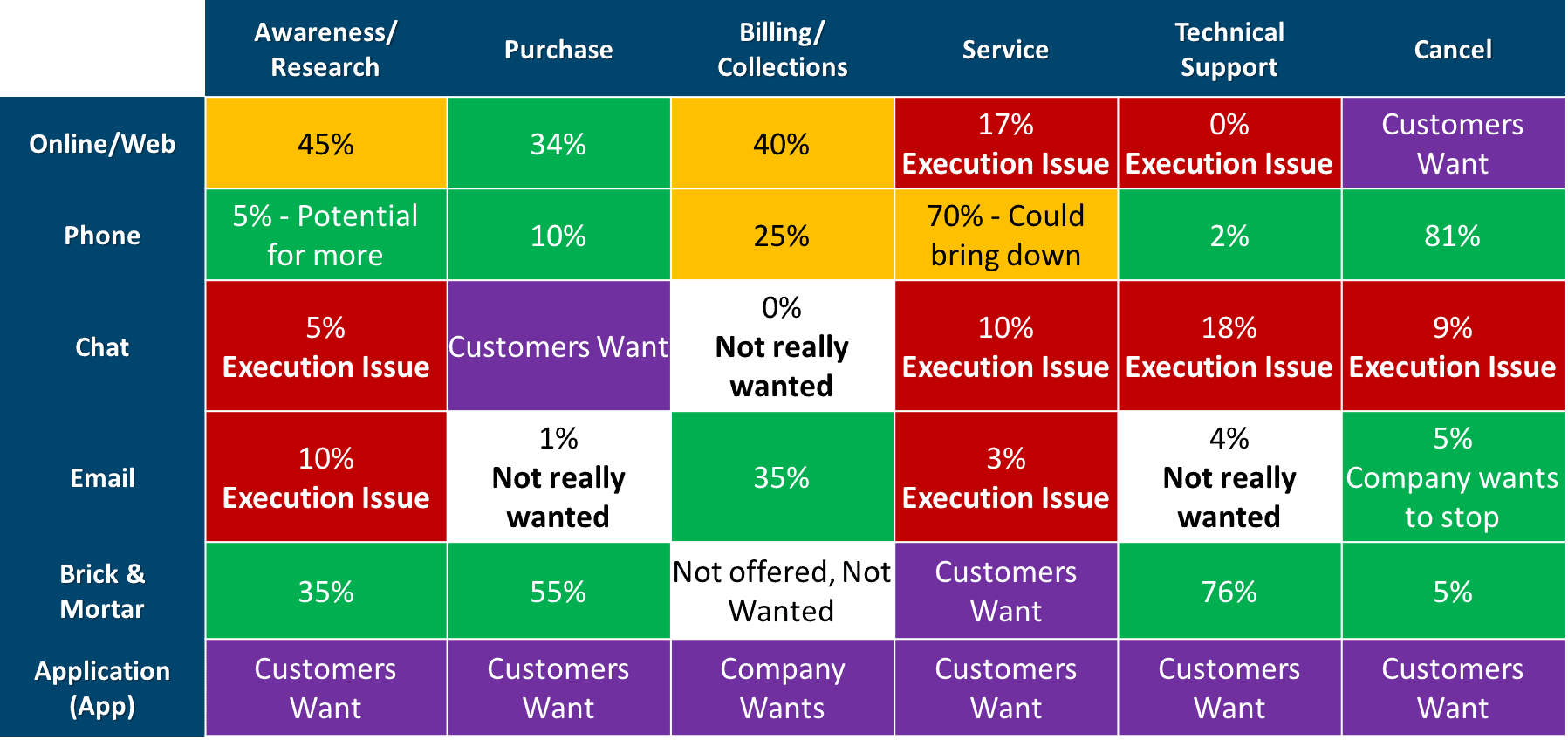
October 27, 2017
Part Four: Have we identified the gaps and taken corrective action?
It’s not uncommon for companies to find themselves wondering if they are offering the right channels, why they are offering those channels, and what their long-term channel strategy should be. Even though it is easy to get excited about offering the latest and greatest channel solutions to customers, it is advisable to take a step back and view things from the customer’s perspective when developing a channel strategy. There are four essential questions companies should be asking themselves along this journey. We will review each one of these during this four-part blog series, and they are:
Part 1: What channels do we offer, and what are our customers using?
Part 2: What channels do our customers want, and what capabilities do they expect?
Part 3: How well are we executing on what we currently provide?
Part 4: Have we identified the gaps and taken corrective action?
_______________________________________________________________
Part 4: Have we identified the gaps and taken corrective action?
The final (and most important) step in taking a customer-centric approach to channel strategy is identifying the gaps and taking corrective action. This is where all the input from the first three parts of the process — identifying which channels are offered are used, which channels and capabilities are desired, and understanding current performance — come together.
Identifying the Gaps
This is a lot of information to process, right? So how can we put all this information into a format that’s easy to read, understand and process? We revisit the Channel Matrix. Only this time, we annotate the Channel Matrix using all the information gleaned by answering questions from Part 2 and 3: what do our customers want and expect, and how well are we executing. This information helps inform why volumes are what they are, revealing where gaps exist and where action is necessary.

Figure 1: Channel Matrix identifying action items.
In Figure 1, color coded cells provide a clear and easy-to-read roadmap for identifying critical performance improvement areas (RED), opportunities for new channel offerings (PURPLE) and opportunities of moderate value (YELLOW). This updated matrix also displays opportunities for channel reduction (WHITE) as well as channel offerings that are on target and performing well (GREEN).
These color codes are the direct result of the insights provided by earlier steps in the process. For instance, through surveying and focus groups, it was discovered that customers had no interest in making purchases through email, so the cell that marks the intersection between email and purchase had been annotated with, “Not really wanted.” Furthermore, it was discovered that customers really wanted online/web service support, but there were existing execution issues which were likely leading to reduced use, which only drove up service traffic to the phone. These findings are also noted in the cells.
So what are some essential action items outlined by Figure 1? First, let’s start with some critical performance opportunities. Clearly, Chat needs some attention. There are execution issues across the board. This is especially important for contact types like Technical Support and Service, where Chat plays a significant volume role, a role that would likely increase with improved execution. From a contact-type perspective, Service is also plagued by execution issues across a variety of channels.
What about new channel offerings? A new Application (App) channel presents itself as an excellent opportunity for change, with customers (and the company in the case of Billing/Collections) wanting an App channel to handle all sorts of contact types.
Further analysis could provide even more gaps and opportunities for action, but these few examples demonstrate the value in returning to the Channel Matrix format when it comes time to identify action items.
Taking Action
Finally, it comes time to take corrective action. This step will vary across organizations, but there are a few points to keep in mind as the process turns toward seeking approvals, securing budget, and transforming opportunities into road map action items.
1) Like anything else, implementing a new channel strategy is most successful when the objectives are clearly communicated. What is the expected outcome? How will customers benefit? How will the company benefit?
2) Is leadership onboard? Has the story been crafted in a compelling way that’s appropriate to the audience? Furthermore, is there a specific individual who will champion the initiative and take responsibility for outcomes?
3) How will success (or failure) of any channel strategy initiatives be measured?
4) Channel strategy changes can touch many areas of the organization. So like the leadership, it’s important for all areas of the company to also be onboard and engaged. Each area of the company must understand the What, Why and How of taking corrective action. What needs to change? Why does it need to change? And finally, how will their area of the business be involved in making change a reality?
We hope you enjoyed this four-part blog series on taking a customer-centric approach to channel strategy.
If you have any questions on this process, or if you’d like to understand how COPC Inc. can assist in this process, please reach out at info@copc.com.
__________________________________________________
Read Part One: What channels do we offer, and what are our customers using?
Read Part Two: What channels do our customers want, and what capabilities do they expect?
Read Part Three: How well are we executing on what we currently provide?